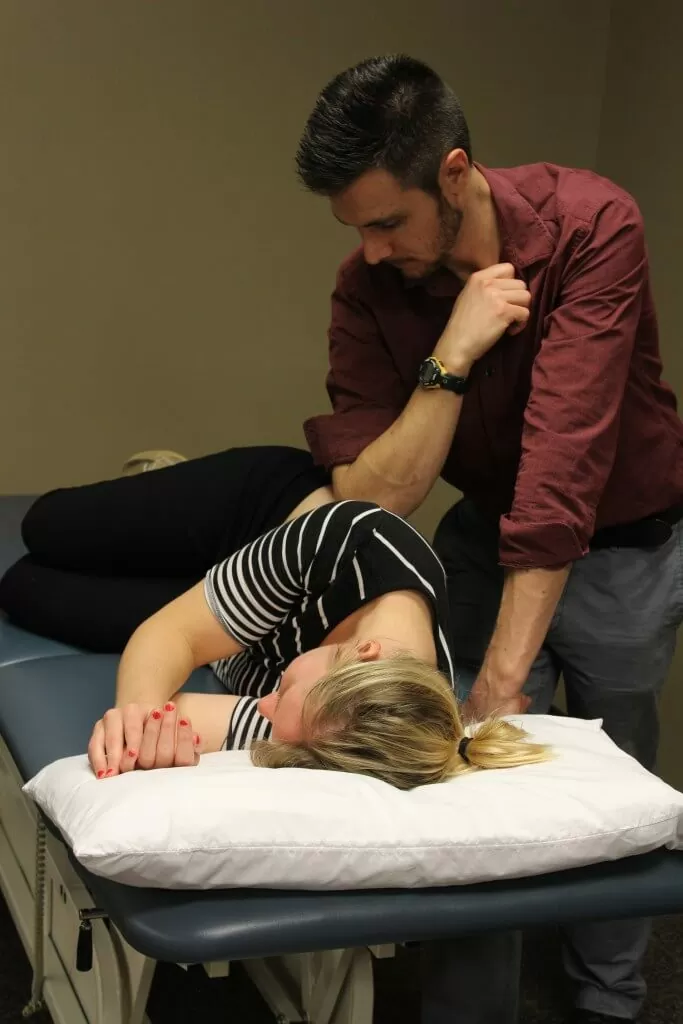As a follow up to our previous blog post on physical therapist education, I feel it’s fitting and appropriate to provide a more in depth post on what exactly we do as physical therapists. Quite often during our examination process and when delivering our treatment interventions our patients remark: “I didn’t know this was part of therapy.” After hearing this day after day, it finally hit me that many people do not fully understand what we do at Appalachian Physical Therapy and it’s important to clearly define our role.
When questioning clients/patients about what they think we do as therapists, many remark we are responsible for treating them after they sustain an injury. Although this is a part of what we do, there is much more to our profession than this. As doctors in our division of the medical community, a big part of our educational preparation is spent on learning how to perform a thorough physical examination in order to ensure proper diagnosis and to deliver appropriate/effective treatment. In fact, whether someone comes to us directly or is referred from another medical practitioner, a large part of their first visit focuses on their medical history and is spent performing a thorough physical examination.
Undergoing this educational preparation allows us to do two important things: 1. to discover the underlying cause of pain and or dysfunction, 2. to help determine which medical professional is the most appropriate to treat the diagnosis. When the true cause of pain or dysfunction is identified it is important to determine which intervention will be the most effective and which medical practitioner is the most qualified to perform that treatment. Our training gives us the ability to recognize when a patient/client will benefit from physical therapy or when referral to another medical practitioner is appropriate.
Although we spend time learning about general medical conditions so we are be able to recognize these
conditions, the majority of our professional preparation is spent on recognizing and treating neuromusculoskeletal injuries. Such injuries include, sprains, strains, fractures, joint pain, muscle pain, back pain, and many others. Through our educational preparation and work experience we develop knowledge and skill in diagnosing and treating these injuries. Diagnostic imaging including x-rays and MRI’s are not always a part of the diagnostic process and many research studies have demonstrated clinical examination techniques along with a thorough patient history are sufficient to make an accurate diagnosis.
Besides the examination process there are many misconceptions concerning physical therapy treatment. Many times, patients think of physical therapy simply as instruction in exercises to strengthen or stretch an area of the body. At Appalachian Physical Therapy, our treatment approach is much more comprehensive and focuses on combining targeted exercises with effective hands on manual techniques designed to reduce pain and restore function. When these hands on interventions and exercises are specifically tailored to an individual patient’s needs, these interventions have the potential to make a significant change in someone’s pain and functional limitations.
As previously discussed, quite frequently physical therapy is the first treatment choice to address pain and dysfunction in the neuromusculoskeletal system. Luckily, in many states throughout the United States including Virginia, insurance policies (excluding Medicare) allow patients to come directly to a Physical Therapist without first consulting another health care practitioner. This allows individuals more efficient access to the healthcare system, allowing them to save money and experience more rapid resolution of their symptoms.
Finally, as physical therapists, we work to be YOUR medical practitioner of choice for the treatment of neuromusculoskeletal problems. Like your primary care practitioner and dentist, our aim is to establish a relationship with you in order to improve the quality of care. Like these other health care professionals, we will have a thorough understanding of your past medical history and knowledge concerning treatment interventions we have performed in the past. We encourage you to contact us with any new symptoms, pain, or dysfunction so we can advise you on the proper course of care and so we can begin to address your symptoms immediately.
Tags: Wellness, Diagnosis, Patient Care





